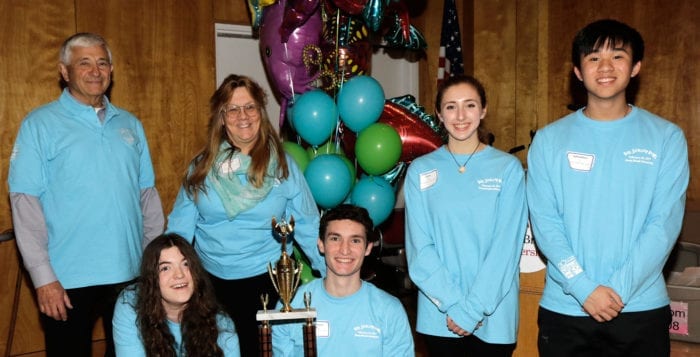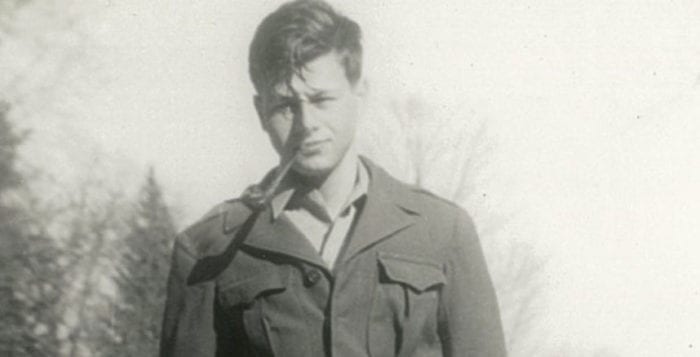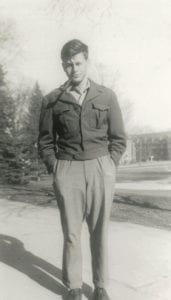Mount Sinai High School’s Ocean Sciences Bowl team is going national.
The group recently went head-to-head at Stony Brook University against 16 other teams throughout the state, and won first place at the regional Bay Scallop Bowl, an academic competition testing the students’ knowledge of marine sciences, including biology, chemistry, physics and geology. Mount Sinai’s 28-27 win against Great Neck South High School clinched its spot in the National Ocean Sciences Bowl, where they’ll join 25 teams from across the country in Corvallis, Oregon from April 20 to 23.
“Going in, we were skeptical, but once we started going through the day, our confidence really built up and everybody got to shine.”
—Ben May
On Feb. 18, the school’s four-student “A” team — senior Ben May, junior Jonathan Yu, sophomore Claire Dana, and freshman Ariele Mule — was one of two left standing after competing in a series of 10 fast-paced, undefeated buzzer, with the next determining the winner. With three seconds left on the clock, Great Neck South ran out of time on a bonus question that would’ve made it the winner, and Mount Sinai came out victorious. The high school has now placed first in 10 of the 16 annual Bay Scallop Bowls.
“It was probably the most exciting competition we’ve had in the Ocean Bowl,” said team co-advisor Glynis Nau-Ritter, a science teacher at the high school. “We work them hard and it pays off.”
Co-advisor David Chase echoed Nau-Ritter’s excitement.
“The students here have not only won the competition, but they’ve expanded their knowledge,” he said. “I’m very proud to be able to contribute to their success, and it’s great to be working with the best of the best.”
May, the team’s captain, said he and his teammates experienced “the ultimate coming-from-behind story” after going through a reconstruction year. May was the only returning member of the “A” team from last year, as the others had all graduated.
“It was thrilling to win and have the experience with so many people who share my love of the ocean.”
—Claire Dana
“Going in, we were skeptical, but once we started going through the day, our confidence really built up and everybody got to shine,” May said. “It was the closest competition I’ve ever been part of. We had no control over it. The other team captain and I were very friendly and it was a bonding experience. The stress of it really pulled us together.”
Calling nationals “a nerd’s dream,” May expressed pride for each of his teammates and said to prepare for the nationals, they met to study over winter break and will be meeting several days a week leading up to the nationwide competition.
“It was thrilling to win and have the experience with so many people who share my love of the ocean,” Dana said. “It was a great surprise, and I thought we all found pride in each other. We were all super ecstatic.”
In addition to competing in the nationals and receiving an all-expenses paid trip to Oregon, each of the four Mount Sinai students received a check for $400 for their victory.
The highest the Mount Sinai team has placed is fourth at nationals. If the students place in the top three or four teams, there are other monetary awards, as well as a trophy and possible student accessories like a netbook. The team could also potentially win a field trip to various research stations, like the Caribbean or West Coast.







